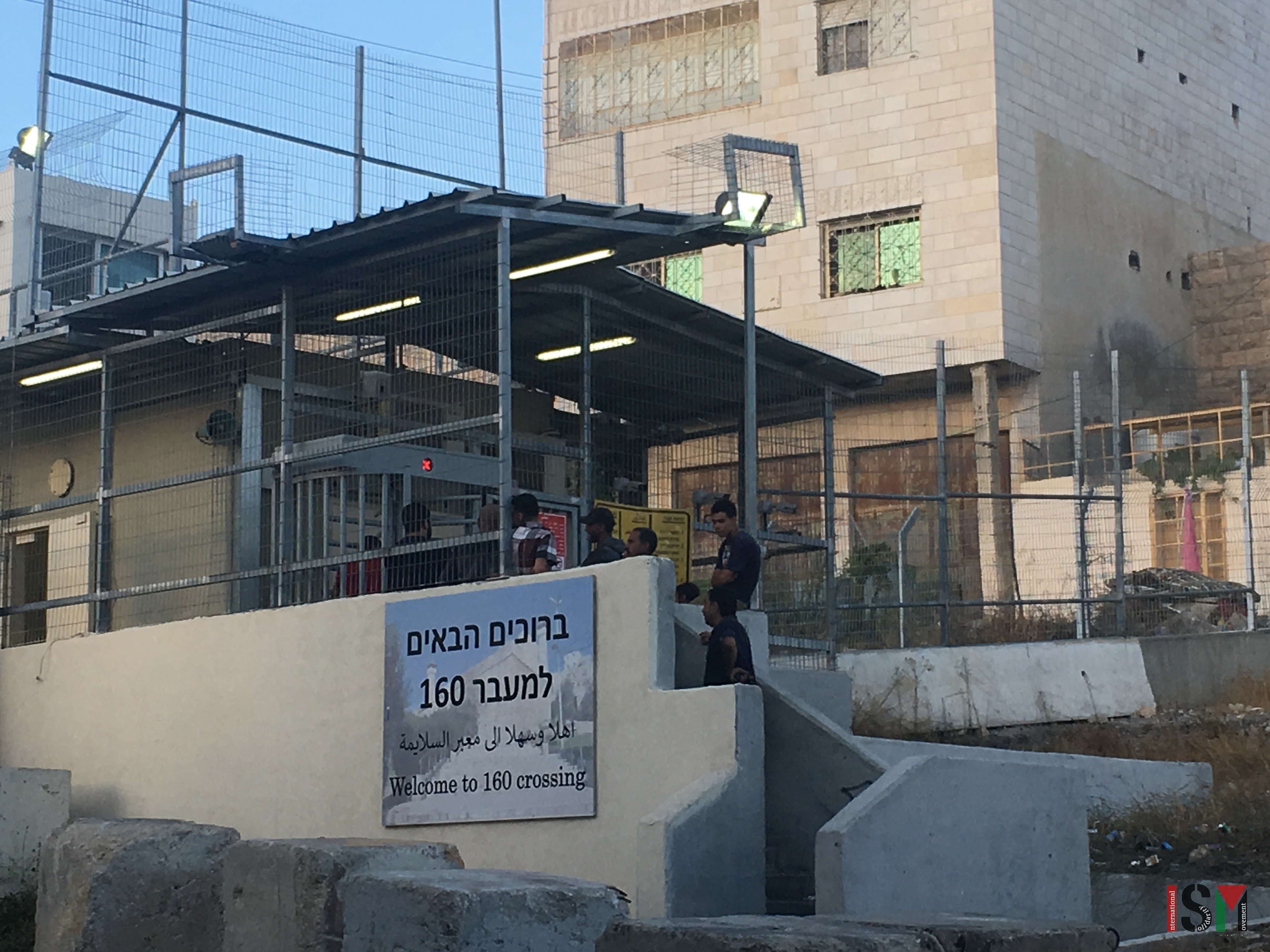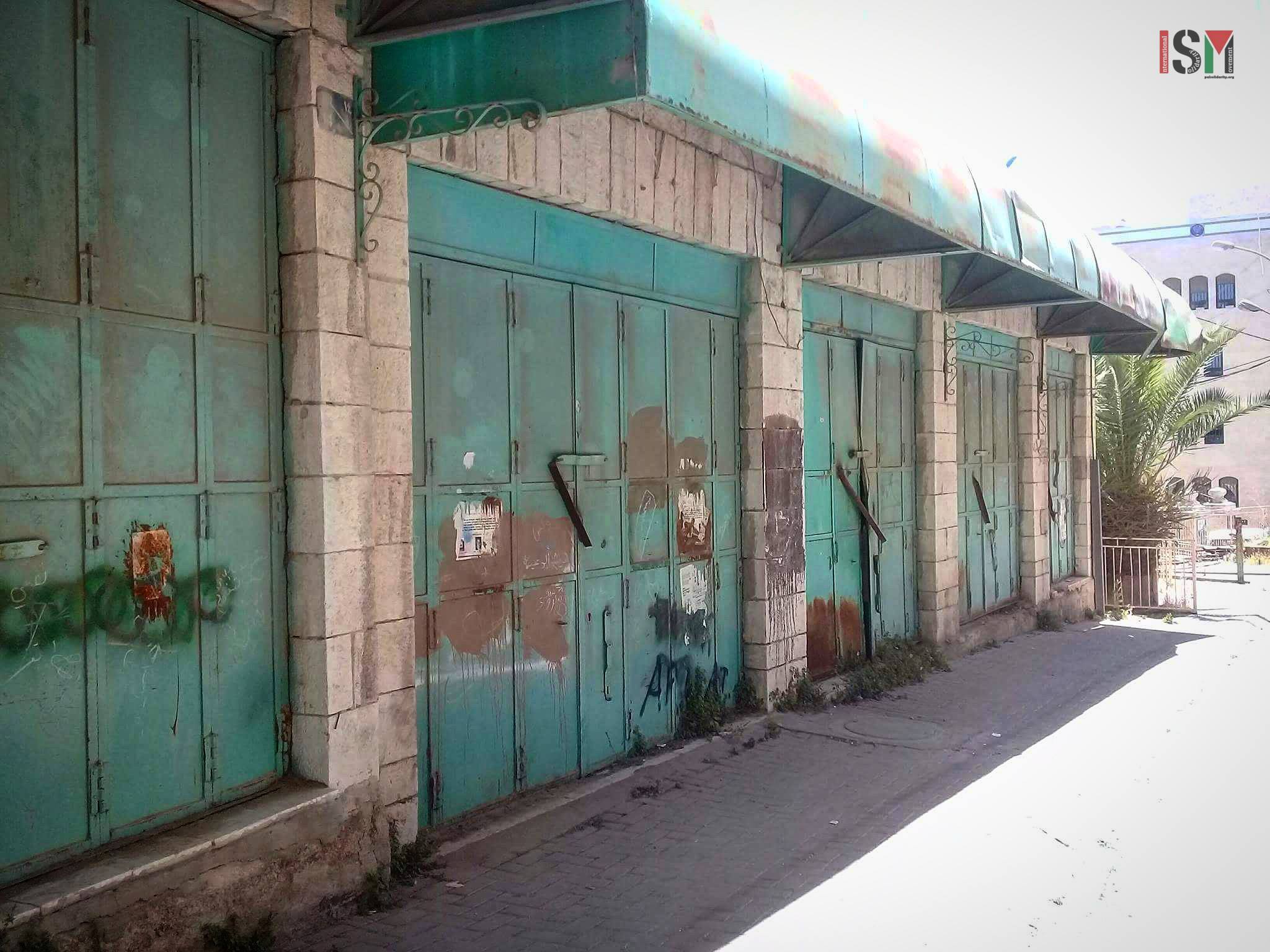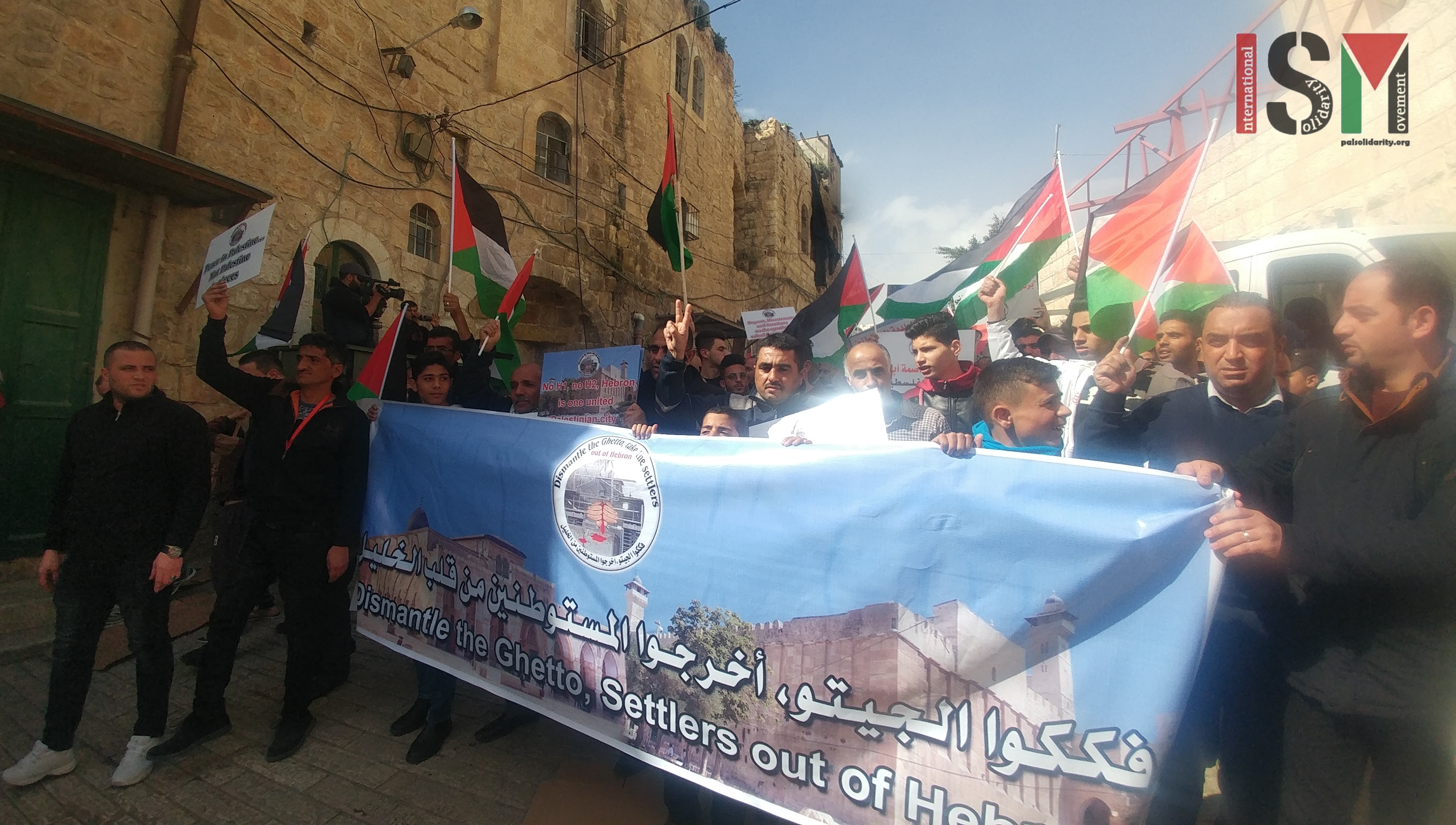Tag: Shuhada Street
-
Waiting at a checkpoint
An ISM activist writes about her experiences volunteering in Hebron (Al Khalil) during Netanyahu’s visit to the city.
-
Entrance to Palestinian house on Shuhada Street welded shut on multiple occasions; Israeli forces and settlers assault Palestinians outside
11 June 2018 | International Solidarity Movement, Al-Khalil Team | Hebron, occupied Palestine. In the two weeks since the Zahida family moved into their new house on Shuhada street in the H2 area of occupied Hebron, they have been subjected to repeated harassment by Israeli forces and Zionist settlers, resulting in their door being welded…
-
Israeli forces suppress Palestinian demonstration against apartheid restrictions in Al Khalil, Hebron
International Solidarity Movement Al Khalil/Hebron Team 16/02/2018 Today a demonstration was organized by Human Rights Defenders and Hebron Defense Committee under the umbrella name Dismantle the Ghetto. Around 300 Palestinians prayed inside and outside the mosque and shortly after prayers they marched from the mosque to Bab Al Baladia which was once a Palestinian gold…



